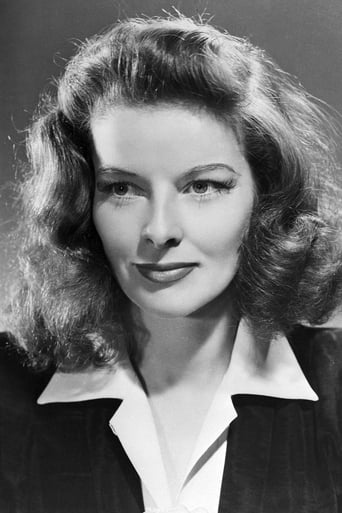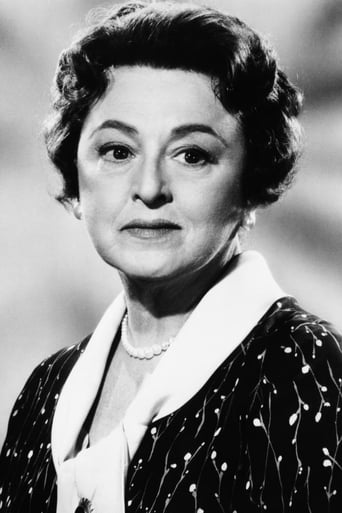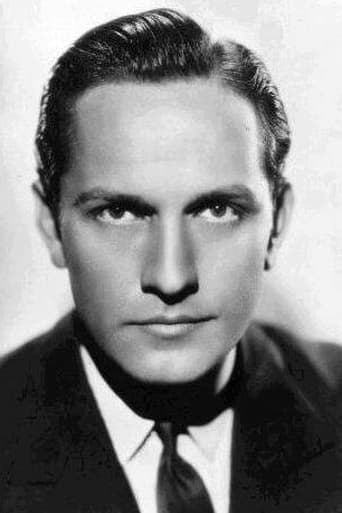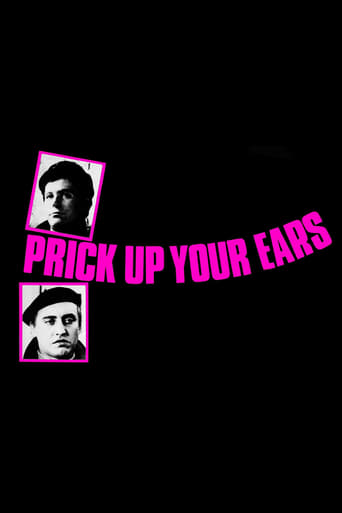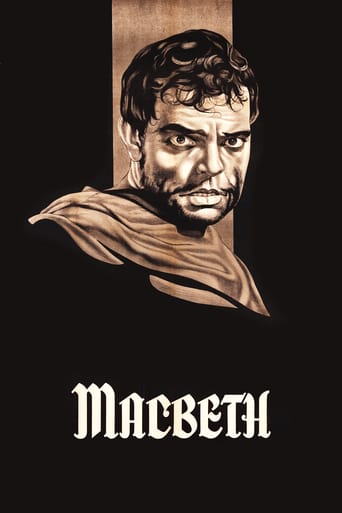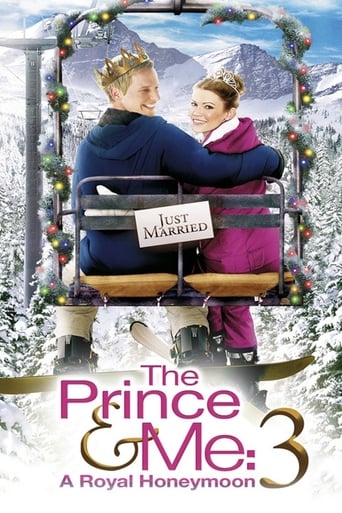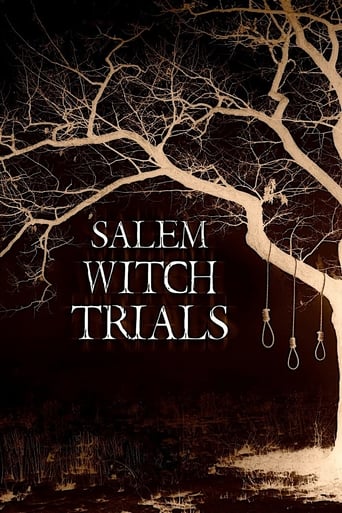
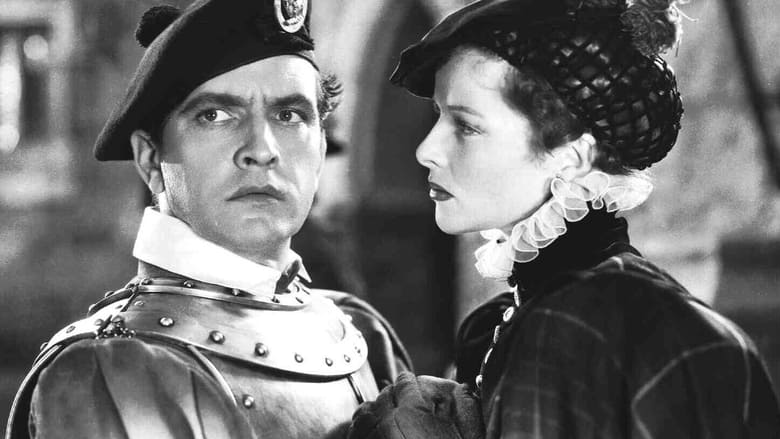
Mary of Scotland (1936)
The recently widowed Mary Stuart returns to Scotland to reclaim her throne but is opposed by her half-brother and her own Scottish lords.
Watch Trailer
Cast
Similar titles
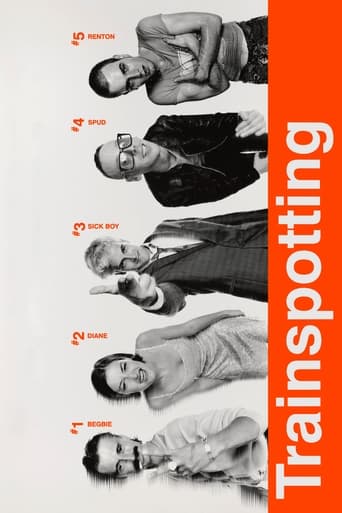
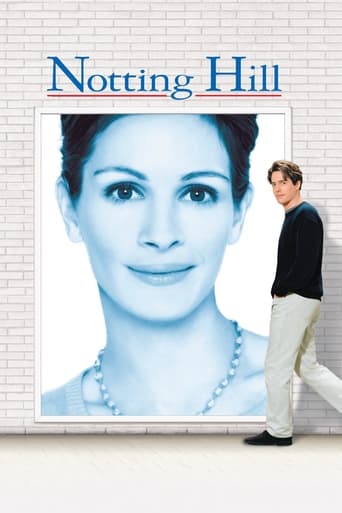
Reviews
A lot of perfectly good film show their cards early, establish a unique premise and let the audience explore a topic at a leisurely pace, without much in terms of surprise. this film is not one of those films.
Excellent and certainly provocative... If nothing else, the film is a real conversation starter.
what a terribly boring film. I'm sorry but this is absolutely not deserving of best picture and will be forgotten quickly. Entertaining and engaging cinema? No. Nothing performances with flat faces and mistaking silence for subtlety.
The film's masterful storytelling did its job. The message was clear. No need to overdo.
If you love Katharine Hepburn and can't imagine how she got her nickname "box office poison", you obviously have never seen Mary of Scotland. Do yourself a favor and keep it that way.In this biopic of Mary Stuart, Queen of Scotland, she's surrounded by those opposing her rise to the throne, including Florence Eldridge as Queen Elizabeth, Ian Keith as her power-hungry half-brother, and Douglas Walton as her effeminate suitor. Not completely alone, Kate has a few allies: Donald Crisp as a loyal Scottish citizen, John Carradine as her secretary, and Fredric March as the love of her life. I'm not well-versed on any of the details, so I don't know how historically accurate Dudley Nichols's script was, but as an audience member, this movie was atrocious. Fredric March was supposed to play someone so incredibly Scottish, he's never seen in anything besides a kilt, but since he's the same actor who notoriously mispronounced his nemesis's name in Les Miserables, could he really have been expected to speak in a Scottish accent? I wasn't the only one who found Fred's lack of accent comedic; Nathaniel Shilkret's music made it clear he thought he was scoring a funny film rather than a dramatic period piece.Kate's portrayal of Mary—and Nichols's screenplay—makes her seem like perhaps the most incompetent queen in cinematic history. Donald Crisp dares to stand up to her in one scene, criticizing her for letting herself become a woman instead of a queen, and I completely agree with him. Time and time again she's given the ultimatum of keeping either her throne or her true love, and she's unable to decide. She claims to not care about the crown, but she won't sacrifice it to run away with Freddy? She's weak, unlikable, and annoying. Trust me, you don't need to watch this movie.
There was something of a fad for Tudor-period dramas in the late 1930s, although Mary of Scotland is something of an overlooked picture in the careers of Katherine Hepburn and John Ford. The star and director went on to have an on-off love affair, although this was the only occasion on which they worked together.Mary of Scotland has the look that is typical of Ford's RKO features. It's often forgotten that Ford was a director who liked to work with space, shape and light, usually manifested in a sharp contrast between the indoor and outdoor worlds. Here the contrast is between the palace of Elizabeth – light, open and filled of straight lines and symmetry – and the castle of Mary – small, shadowy and made of rough curves. At first glance this seems to imply that the Scottish setting is grimmer and more confined, but for Ford these cosy spaces with layers of shadows were also about honesty and simplicity – see for example the compositions he makes in The Informer or The Fugitive. Those two pictures were also made at RKO, and their expressive look is testament to the fact that although the studio might not have had much money it did have a strong and open-minded production design team, something Ford took advantage of when he could.By this point, few Ford films would be complete without the sing-song scene, and there is an especially fine example in Mary of Scotland. Ford never made an out-and-out musical in his career, but the way he uses singing as an emotional backdrop is remarkable. Here, the song sung by the peasants as they march into the castle begins as a simple yet effective expository device – demonstrating where the people's loyalties lie – but then the scene moves onto another level. Ford isolates one singer, then cuts to a rare close-up of Hepburn. The beauty of the music provides a backdrop to her emoting. It is in such moments that Ford's direction is at its strongest.This was perhaps an important breakthrough role for Hepburn, whose parts until now had mostly been as teenagers or young women. This is her first real adult role and she handles it well, albeit with one or two touches of uncertainty when she is required to act "queenly". She does however manage the task of humanising the queen, more so than the screenplay would seem to allow. Unfortunately her leading man, the normally excellent Fredric March, is rather bland here. It's a real treat though to see John Carradine in a role where he really gets to show his more sensitive side. Because of his looks, not to mention his creepy voice, the character actor generally landed villainous roles, but he was actually at his best playing good guys.One oft-repeated story regarding this production – although it varies a little depending on who's telling it, so pinches of salt at the ready – is that Hepburn and Ford disagreed over the necessity of Mary and Bothwell's final scene together on the tower top. Ford thought it a pointless bit of soppiness, Hepburn said it was the most important scene in the script. Eventually a flippant Ford challenged Hepburn to direct it herself, which she did. The scene stands out because Hepburn actually shoots it with some romantic tenderness – something Ford hardly ever did – with lengthy close-ups and rhyming angles. You can see why Ford didn't like it; he tended to downplay the love themes in his pictures, and on top of that the scene is rather heavy on dialogue. Hepburn was right though – without this scene the romance between Mary and Bothwell would be little more than a subplot, and without the romance the film wouldn't work. Audiences would find it hard to empathise with a queen clinging onto her throne, but easy to sympathise with a woman separated from the man she loves.Mary of Scotland was not really Ford's cup of tea, and it was his rather cavalier approach to interpreting a screenplay that spoiled a fair few of his pictures (even though it won him the admiration of the auteurists). This picture is only saved by his use of music, the proficiency of the RKO crew and of course the good judgement of Katherine Hepburn. Nevertheless, I can't help but love Ford's laid-back realism. In one scene, we see a dog barking crazily at men entering a room; in another a moth flutters about John Knox's head. How many other directors of that era would have kept those takes?
This is a good costume-designing , historic-drama and Katherine Hepburn is well cast in the title role . She plays a tragic , romantic heroine that contends with various treacheries . Mary (1516-1558) inherited the throne of Scotland from Jacob V . She was next in line to the English kingdom , and married Francisco II , king of France , but he died early . Having been in France for thirteen years , Mary returned Scotland , and arrives from France with some misgivings . Then , Mary disembarks in Leith and goes to a castle near Edimburg , along with David Rizzio (a cadaverous John Carradine) , court musician and confidant . There , she's received by his brother , the Earl James Stuart , (Ian Keith) . Later on , Queen Mary married a foppish named Lord Darnley (Walton) . But Mary falls in love with Bothwell (a stylish Fredric March) , a kilted Earl and her supporter in her battle for power . Then , Rizzio was reputed to be the father of Mary's , the future James I of England . Darnley , with some underlings , murdered Rizzio in Mary's presence . But Darnley is killed by an explosion in his refuge , outskirts Edimburg , and the God-fearing Calvinists led by John Knox (Moroni Olsen who played same role in stage) accused to Bothwell as regicide . John Knox and the rebels Lords besiege Holyrood and the Borthwell's stronghold , Dumbar castle . The Calvinists forced her abdication , Mary escapes and asks for protection to Queen Elizabeth I (Florence Eldridge) , but Mary is double-crossed and is taken imprisoned in the Tower of London . Although supposedly Mary and Elizabeth never met face to face , the movie have them doing so and the screen crackle when both have their reunion , because they are strong rivals for power in Tudor dynasty , England . After that , Mary confronts her English accusers at court in a stylized trial . Finally , the film reflects splendidly when Mary goes to beheading block with all due pomp and circumstance .The motion picture is finely performed by Katharine Hepburn, in spite of this she was in her ¨box-office poison¨ days , the last scenes , where Mary confronts trial is so well played and photographed in a stylized manner -with Mary on the floor and judges in a sort of balcony- by cameraman Joseph August . However , the picture is interminable and overlong and some moments is frankly boring . Writing credits with excessive speeches by Maxwell Anderson (his own playwright) and Dudley Nichols , a Ford's habitual screenwriter . The picture is lavishly produced by Pandro S. Berman , an usual costumer's producer and professionally directed by John Ford . Followed by a remake with the same title (1971) with Vanessa Redgrave as Mary and Glenda Jackson as Elizabeth and directed by Charles Jarrott .
Brooks Atkinson was a first rate drama critic for the New York Times. He had blind spots. He over enthused on the career of Maxwell Anderson. Anderson wrote some good plays such as "Winterset", but Anderson was enthusiastic of Anderson's pompous attempts to do dramas in blank verse: "Mary Of Scotland", "Elizabeth The Queen", and "Anne Of The Thousand Days". The problem with these plays is, even if they get the history right they are too stiff. Compare the conclusion of "Elizabeth The Queen" to "A Man For All Seasons". Yes, the loneliness of the elderly Elizabeth is shown as Essex goes to his doom - but in reality Elizabeth knew there were other young men to replace her dangerous, ambitious lover. In "All Seasons" the tragedy of a rotten system crushing the life of a decent, thoughtful man like Thomas More is far more powerful as it's stark tragedy is silently brought to us.That said, the first of the three Tudor tragedies to be filmed was "Mary Of Scotland". It is above average because it is starring Katherine Hepburn (a distant relative of Mary's third husband the Earl of Bothwell) and Frederic March, and directed wholly or partially by John Ford. It suffers from being black and white, except for one moment of sheer unexpected terror: when Mary sees the Scots nobles who oppose her they are photographed in such light and darkness to look like ogres in a nightmare.The film follows the reign of Mary from 1560 to her execution in 1587. Most Americans do not understand the great difficulties that Mary (and Elizabeth) both faced in their parallel reigns. While England and Scotland allowed for female monarchs, women were not considered good material for rulers. They were considered governed by their emotions more than by their brains. Those women who ruled well were usually married to capable partners (Isabella of Castille and Ferdinand of Aragon of Spain). More frequently they were dismissed as misfits, like Isabella and Ferdinand's daughter Juana the Mad).Mary had other problems. From 1400 to 1560 the nobles of Scotland got a great boon. Scotland had a series of minors who grew up to be king, married, and then died before they could cement their monarchic views on the government. The nobles cemented their local powers at the expense of a weak central authority. Mary had been Queen of France, married to Francis II who ruled for a two year period (1559 - 1560). As Mary was the niece of the Duc De Guise, the king's power-hungry mother Catherine De Medici hated her. When Francis died suddenly, Catherine encouraged Mary to return to rule her own country. Surprised Mary did so, not realizing that she was unprepared to start ruling. She was a Catholic, and she really needed some time to understand the need to compromise and take advice from Protestants. She never did understand this.Her foes hated her and were fully supported by Elizabeth, who never could see that an attempt to join forces with her cousin might pay back great dividends. But then Mary was ambitious - she wanted to be Queen of England as well as Scotland. Her Catholic supporters felt she was legitimate Queen of England (as Henry VIII had briefly disowned Elizabeth as a bastard when he executed her mother Anne). So the peaceful resolution of their differences was almost impossible.Elizabeth had only to watch from the sidelines, with only an occasional move on her own part, to see Mary wreck her own position. She encouraged a marriage between another cousin/potential heir Lord Henry Darnley to Mary (Mary almost chose Elizabeth's lover Robert Dudley!). The marriage was a disaster, as Darnley was an ambitious fool and vicious scoundrel. But it cemented a Scottish succession to the British throne from two Tudor heirs instead of one.Hepburn portrays Mary as a brave woman desperately seeking a way out of the difficult situation she has inherited, especially tied to Darnley by marriage and facing the ghouls who are John Knox (Moroni Olsen) and the Scottish nobles - led by her jealous half brother the Earl of Moray (Ian Keith). Her only allies are the independent Earl of Bothwell (March) and her secretary Rizzio (John Carridine). The murder of the latter (implicating Darnley) is the first step to her loss of the throne, and to the death of her husband. We know today that Kirk'a'Field house was blown up by Bothwell, but to this day we don't know if Mary was implicated. It remains one of the big mysteries of the 16th Century.Historically Bothwell was no prince, but ambitious in his own right - he killed Darnley in order to marry Mary, and guide her to rule both Scotland and England. But March plays him as a man deeply in love with his Queen, and this enhances the story's tragedy - especially as Bothwell died in exile insane. The reason for this was his ship was captured by a Danish warship. Bothwell was guilty of a rape in Denmark, and was imprisoned. His punishment (which led to his madness) was to stand chained to a stone pillar that was half his height.The last ten minutes glosses over the road that led Mary to the block in England - her support of a plot by one Anthony Babbington to kill Elizabeth and let Mary take the throne. Elizabeth's spy-master Sir Francis Walsingham sprung this trap - though Elizabeth did not reject the result. Elizabeth allowed a functionary to be blamed for falsely getting her to sign the death warrant - but all she did was briefly imprison the man. Unlike her movie representative (Florence Eldritch) she never met Mary.A good film - but it is too gentle on Mary's failings, and not deep enough to explain what is going on in the background.
